 Staying on the ship for the last ICR team lecture was a good choice. All
three scientists spoke and offered important observations and asked critical questions for
our benefit.
Staying on the ship for the last ICR team lecture was a good choice. All
three scientists spoke and offered important observations and asked critical questions for
our benefit.
Roger Sanders (in the middle here) offered his insight into the process of adaptive radiation, which is a scientific term describing what happens when organisms come upon a new environment largely uninhabited by organisms similar to themselves. Because they adapt to the challenges and assets of their new environment, populations are able to spread out (or "radiate") and fill their new home. We frequently see adaptation to slightly new food resources and environments. Roger felt that although there was evidence of some organisms diversifying into new environments, adaptive radiation was too strong a term for what we saw. I wasn't so sure. I felt that Darwin's finches particularly exhibited strong evidence for adaptive radiation.
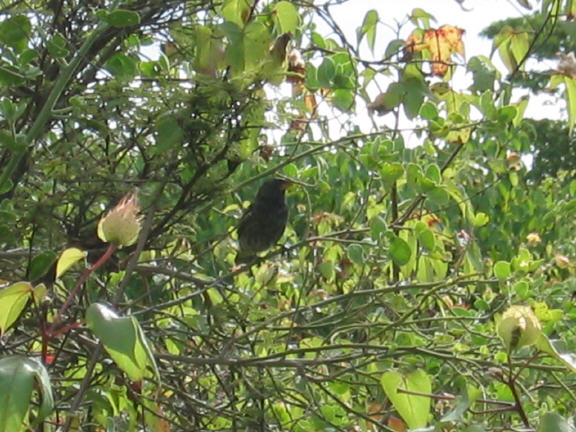
The finches have come to represent at least seven to nine species and as many as thirteen on the islands, eating food as diverse as large seeds, cactus, insects, and blood. Their size and coloration haven't changed or diverged so dramatically, but their food sources certainly have. This is typical of the semantic disagreement (arguments over the meaning of words) that scientists sometimes have. The real problem is how you define adaptive radiation, not the evidence itself.
This is a tree finch.
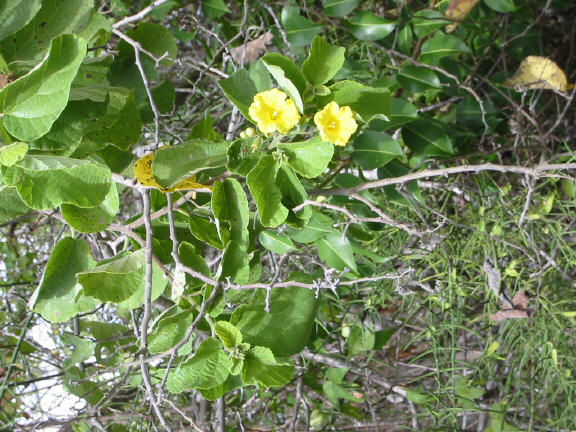
Similarly, in the creation/evolution discussion, how one defines evolution is critical. If evolution is simply defined as change through time, then there is no disagreement between creationists and evolutionists. Everyone now agrees that living things change through time. But if evolution is then defined as the process from which all life forms today arose from a single common ancestor with only natural selection and mutation to account for it, then the disagreement swells up like the tidal surge of a hurricane.
What confuses some people is that certain textbooks will switch from one definition to another with no warning. Always know what a textbook or teacher means by the word "evolution."
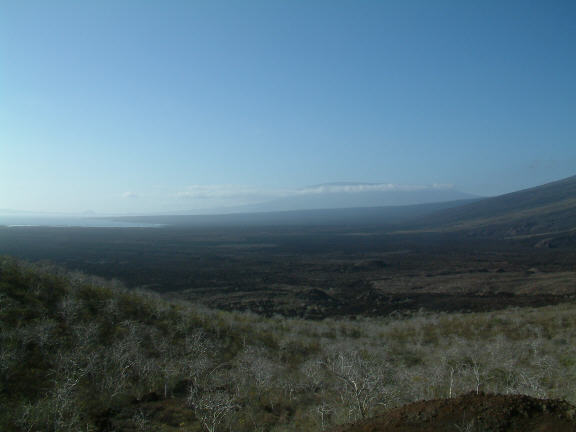
Dr. Ken Cummings, the ICR tour leader, closed our time with a review of some of our objectives and a list of questions for us to discuss and ponder. I'll cover just a few of the more significant goals and questions from this time.
One of Ken's goals was for us to see the land and life forms as Darwin saw them. Perhaps in most places we visited we did, because conservationists have insured that the islands' ecosystems have not been intruded upon.
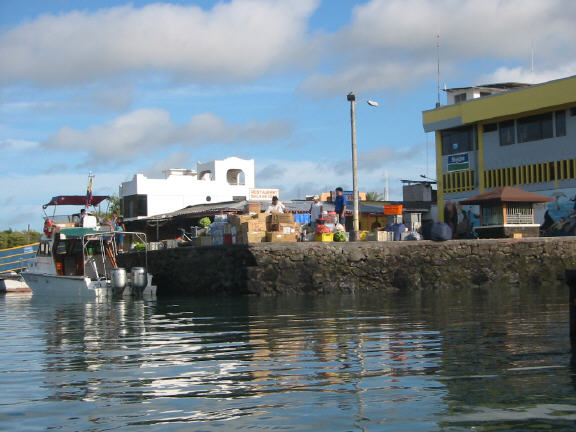
On other islands, however, such as Santa Cruz, which has seen a large influx of introduced species (including people), things have changed significantly.

Ken also wanted to enumerate the various conservation programs already in place. We did get an opportunity to witness and discuss the tortoise conservation program during our visit to the Charles Darwin Research Station. Principally, during this wrap-up discussion, we talked about the efforts to continue the subspecies of Lonesome George, of which he is the only living representative.
Here are Ken's wrap-up questions for us, with the group's answers and sometimes my slightly different answers. It is important for me to state here that I am not as convinced of the earth's young age (6,000-10,000 years old) as the ICR scientists are. I am very sympathetic to their position but simply am not convinced that the Bible requires such a young age or that the geologic evidence can support such a young age as opposed to the millions of years modern geology requires. I am skeptical of both positions. I simply don't have enough information, Biblically or scientifically, to make a firm decision. It should be stated, therefore, that the answers you will read do not necessarily represent either my own views or those of ICR. It's an amalgamation of various viewpoints.
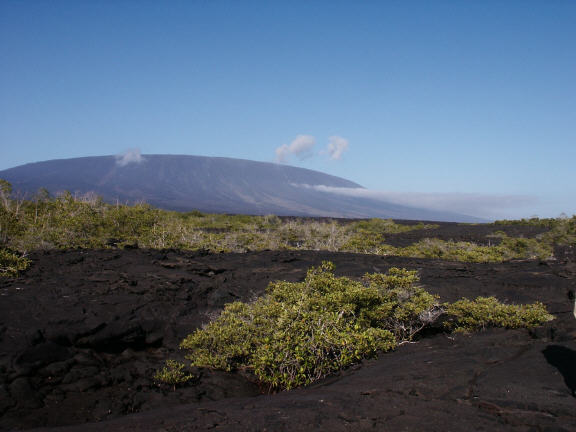
1. Were these islands created or did they evolve?
We discussed that the islands indeed have changed, but they have not evolved. That's an incorrect use of the word "evolve." These islands weren't created ex nihilo (Latin for "out of nothing"), either; they were a result of post-flood tectonic and volcanic activity. In other words, by creationist standards these islands did not exist until after the flood of Noah and are therefore not older than about 4,000 years.
I have since learned that the youngest island, Fernandina (shown here, and estimated by evolutionists as 800,000 years old), sits right on top of the geological hot spot that has formed all the Galapagos Islands. They are all volcanic islands that have formed as the tectonic plate called the Nazca Plate moves eastward toward South America. The oldest islands are east-southeast of Fernandina and estimated by evolutionists to be three million years old. In some places it was hard to believe that these islands were so old and yet still so rocky and barren. But the desert-like climate has a lot to do with that as well. Deserts are always rocky and barren.
Scientists have found evidence of submerged islands farther east. These now submerged islands are estimated to be as old as ten to eleven million years.
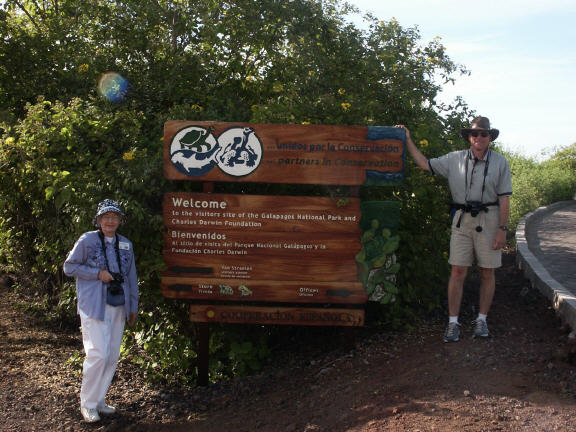
2. Were species created or evolved?
I think what Ken was after here was simply to help us to understand the importance of being careful about how we use the word "evolution." Clearly these species were not individually created, but upon arriving at the islands, they have changed, diversified or specialized. Again, he was just making the point that the word "evolved" is a loaded term and we should try to avoid using it whenever possible.
3. What were the kinds on the Galapagos Islands?
This we rather quickly answered by just naming off tortoises, the sunflower (scalesia) group, the opuntia (prickly pear) cactus group, finches and mockingbirds.
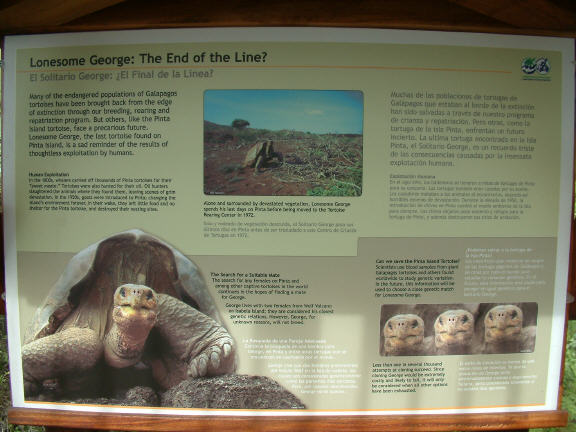
4. What evidence points to the Fall on the Galapagos Islands?
People named a number of possible evidences of the Fall such as mutation, death, volcanism, genetic decay, extinction, introduced species, etc. We even talked about the attempts to reestablish the natural environment and preserve endemic species that were threatened with extinction. If evolution is to be fully accepted, they really should do nothing to preserve these species since man is just another part of the ecosystem. But by intervening and trying to rid the islands of the introduced pests and reestablish the endemic species, they are unknowingly exhibiting a biblical dominion (Genesis 1:26-28) to restore the natural state. In the evolutionary paradigm, there is no real foundation for doing so. In fact, we might point out that evolutionists' desire to intervene in this natural state must be "borrowed" from a biblical worldview since there is no basis for it in an evolutionary worldview. But since the Bible records that God gave humans dominion and rule over His creatures, we have every justification for maintaining God's created novelties wherever possible as an expression of being good stewards. Psalm 104 tells us explicitly that some environments have been created for certain creatures and we should respect that.
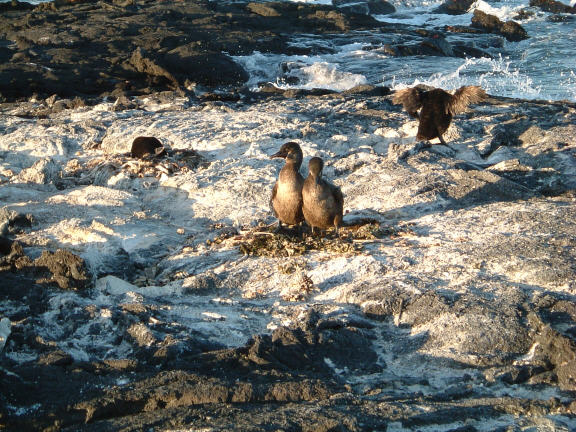
The flightless cormorant could also be seen as an effect of the Fall since the underdevelopment of its wings is probably due to a mutation that short-circuits wing development.
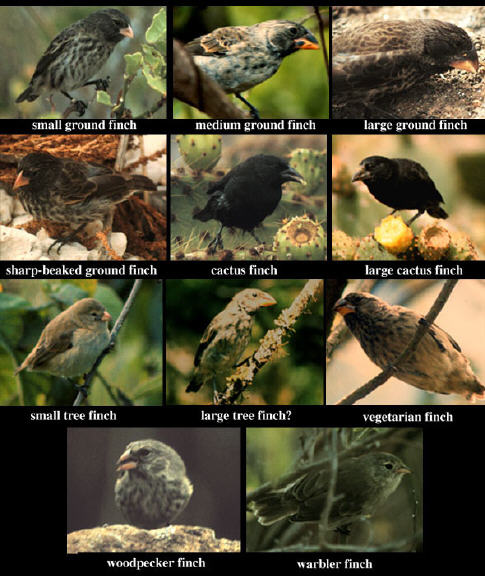
5. Is there evidence for speciation or specialization since man has been here?
The answer is essentially no; there simply hasn't been enough time since man has appeared on the scene.
6. Is there evidence for natural selection?
The answer is an overwhelming yes; this just emphasizes that creationists fully recognize natural selection as a real process. Natural selection must have played a role in the origin of Darwin's Finches from one founding population that is now estimated to have been comprised at least 30 individuals. Evolutionists estimate that this happened about two million years ago. But current research has shown that some of these "species" (the six ground and cactus finches particularly) still interbreed and the hybrids are also fertile. Moreover, these same finches, the ground and cactus finches, are virtually indistinguishable when comparing their DNA. So are they really separate species after all? Perhaps the six ground species are one species with six varieties. But on the other hand, the six "species" normally only reproduce within their own species. Hybridization only takes place less than 5% of the time. This tell us that they act like separate species most of the time.
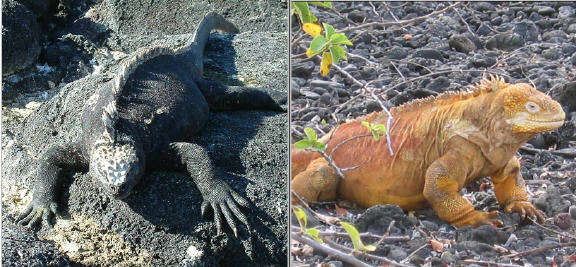
Natural selection must have been involved in establishing the land and marine iguanas. They have such different habits and food sources that selection certainly helped reinforce these habits and some of their unique adaptations such as the marine iguana's ability to rid itself of excessive sea salt by "sneezing" it out.
It is interesting that the iguanas are capable of limited interbreeding despite evolutionists' conclusions that they have been separate species for over ten million years (determined by comparing DNA), and probably colonized the now submerged older islands first despite no real evidence. Something seems wrong here for the evolutionist. To be that old as separate species and yet interbreed at all is highly unusual. And the two iguanas are also very similar in appearance despite being separated for so long and existing in such different habitats (land and sea).
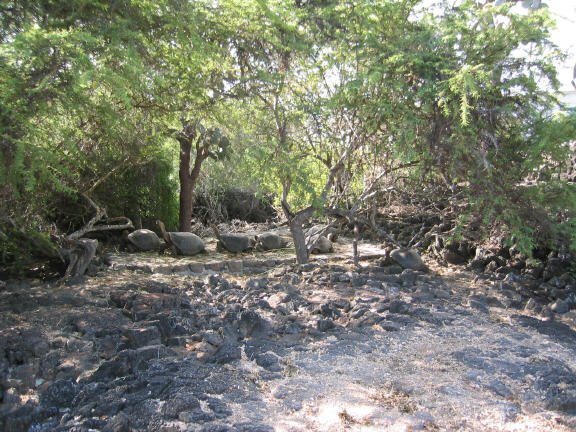
Natural selection was most likely involved with establishing the dome versus the saddleback form of the shells of the Galapagos tortoises. The saddleback form can extend its neck higher to reach the succulent cactus than the dome form, which only eats grasses and fruits on the ground. But the slightly different shell types from island to island don't seem to have any adaptive significance. The different subspecies of dome and saddleback tortoises probably came about by what scientists call genetic drift, meaning random change with no selection.
Interestingly, evolutionists estimate that the Galapagos tortoise evolved from a small box-like tortoise from South America almost ten million years ago. But the Galapagos tortoise has only been on the Galapagos Islands for less than three million years. Evolutionists have to hypothesize that there is an extinct intermediate giant form of the South American tortoise that has not been identified yet. It doesn't occur to them to question either their dating technique or their evolutionary perspective.
Darwin's finches, the iguanas, and the tortoises each represent unique challenges to both evolutionists and creationists.
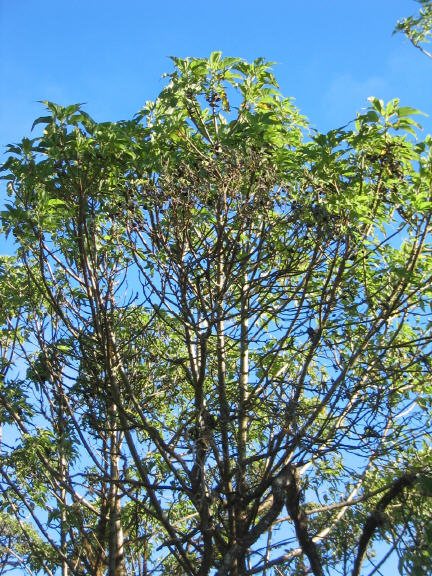
7. Is there evidence for naturalism or supernaturalism?
We believe we may see evidence for planned, designed variation. In the beginning, we suggested, when God was creating these plants and animals, He knew He would send the Flood and what effect it would have on His creation. So He planned genetic variation into these organisms right from the start, knowing that they would not need it until after the Flood. As they moved to refill the earth after the Flood, the ability to change and adapt to new environments unfolded because God had designed them to do exactly that.
Now, we are making assumptions about this: we don't have any way to go back to these pre-flood populations and see if this is true. But it is a way that helps to explain why plants and animals were able to change and adapt so quickly without the need for large numbers of mutations. The point is that we didn't need to wait for new mutations to bring about the diversification seen in the Galapagos Islands. (Evolution says that mutations are the only channel for change.) The necessary variation in the finches, iguanas, tortoises, sunflower plants, etc. was already present in the genes of the populations that colonized the islands. There is no way for this level of variation and diversity to accumulate on its own through mutation in only 4,000 years since the flood.
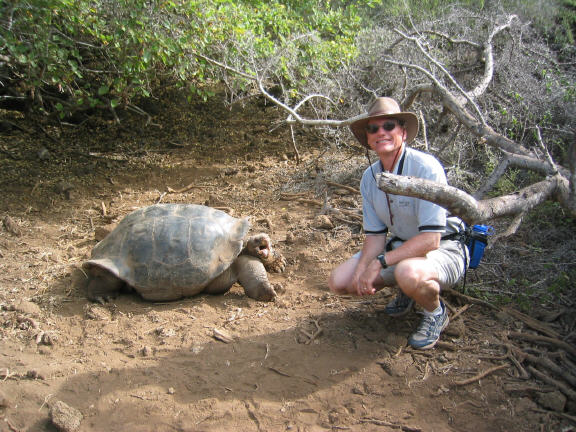
In addition, many of the colonizing plants and animals can be recognized as coming from the South American mainland. This means that the uniquely South American plant and animal systems (scientists call these the flora and fauna respectively) had to have already been established before colonization could happen on the Galapagos Islands. This would mean that only around 3,500 years are available for the current plants and animals to colonize and diversify on the Galapagos Islands. This is a major challenge to creationist biologists to try to determine how this may have happened so quickly.
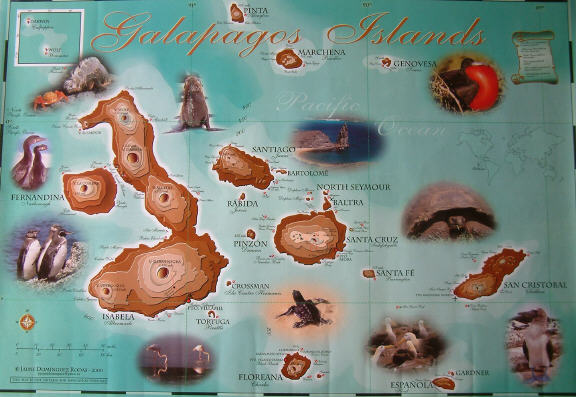
So ends our journey to evolution's sacred ground. We saw a lot, learned a lot and left with more questions than when we came. But that's what makes the scientific study of God's world so fascinating. The more we learn, the more questions we have, the bigger and more majestic our God becomes (Romans 1:20). Perhaps God has lit a fire under you to help us answer some of the intriguing questions we have raised about this unique place called Galapagos. We always need more trained biologists and geologists to help us better understand what God has given us dominion over. We can only be effective stewards over His marvelous Creation as we strive to understand it using all our powers invested in us as His only image-bearers in Creation. If we go to Galapagos again, maybe you'll come with us!

One last note:
We are so very grateful for the wonderful people who gave so sacrificially to fund this research trip. We ask God to bless them richly and eternally since we cannot.
We also want to acknowledge the generous use of so many photos from some of the other kind people on the ICR tour:
Dr. Rebecca Orr
Carol Wieseman
Mark Stephens
Dr. Jan and Andy Mercer
With grateful hearts,
Ray and Sue Bohlin